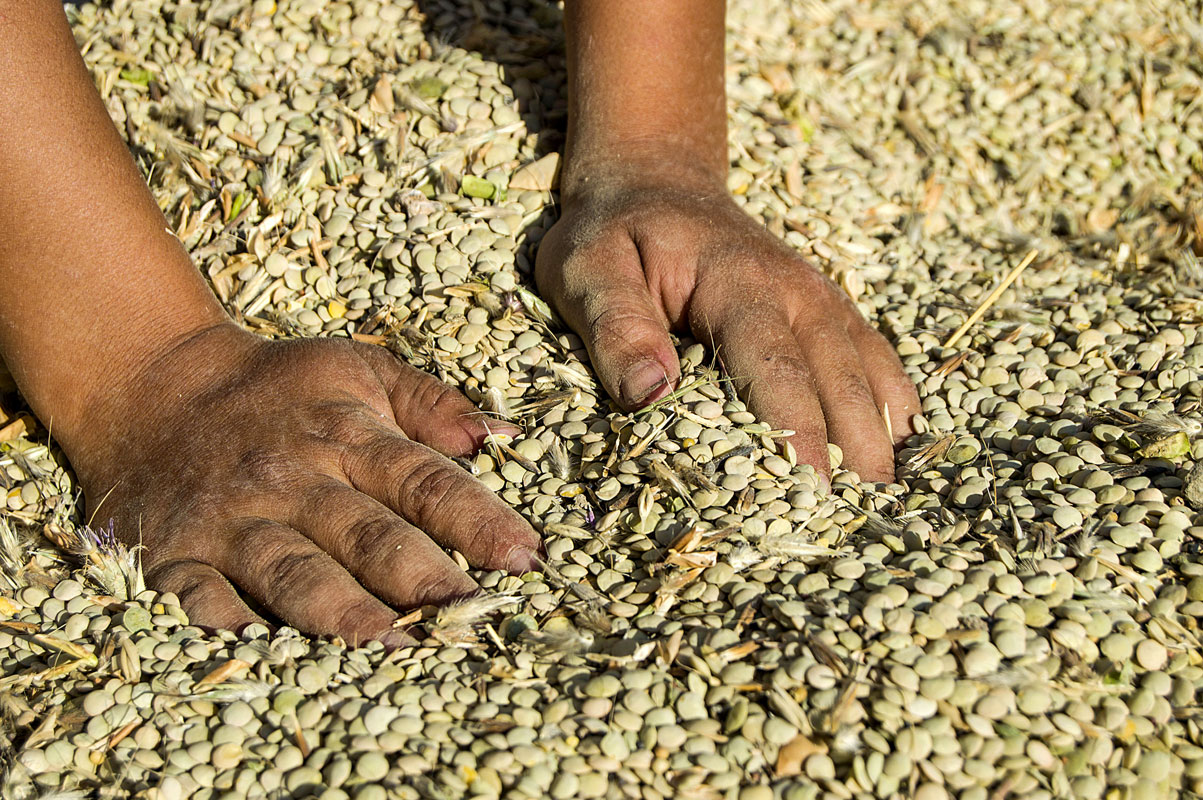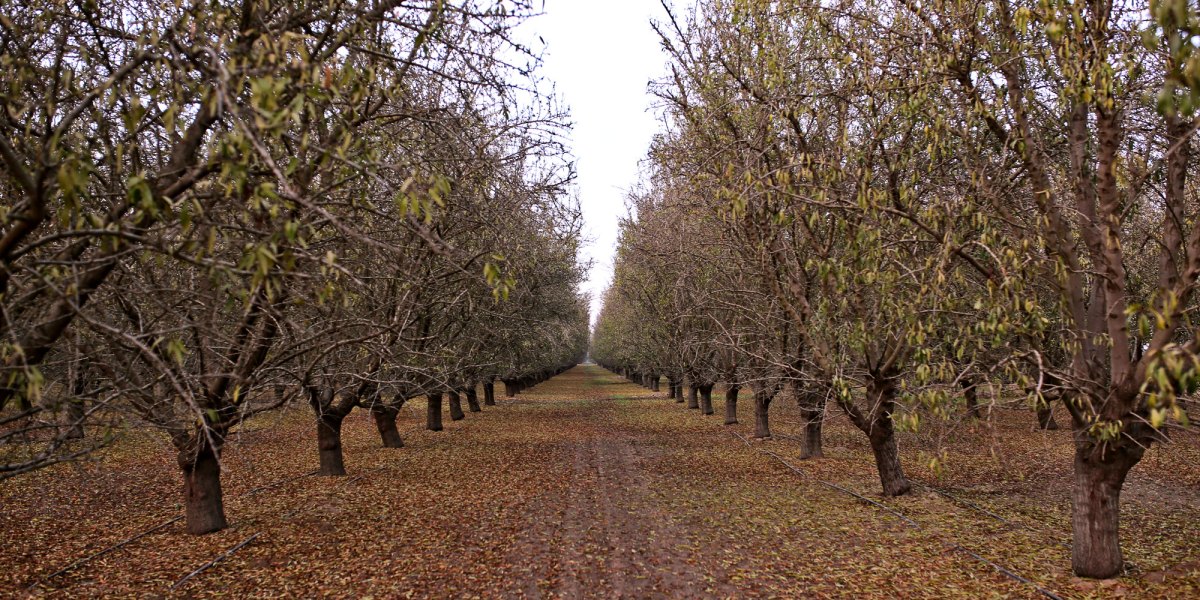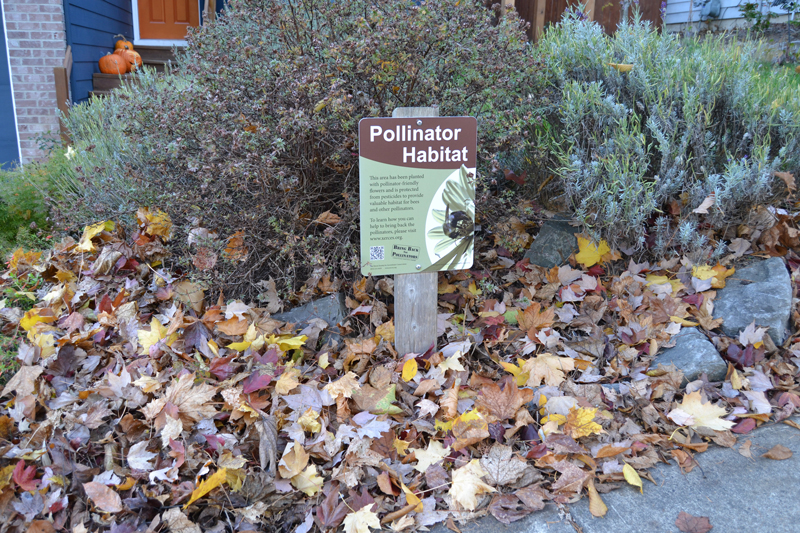02/28/2022 SOURCE: projects.sare.org
-
(0)
-
Bookmark
- Comments. (0)
 John LaRose Jr.
John LaRose Jr.
Topics: Soil Health, Agriculture Global, Food/Nutrition, Ag Global Specialty Food, Regenerative Agriculture,
Plant-Based Diets and Regenerative Ag Have Sparked a Pea and Lentil Renaissance
Health and environmental concerns are driving 'phenomenal' growth for these humble pulse crops, which offer soil as well as dietary benefits.
-
(0)
-
Bookmark
- Comments (0)
Topics: Climate Change, Regenerative Agriculture, Renewable Energy (Solar/Wind),
This fuel plant will use agricultural waste to combat climate change
A planned California hydrogen facility will offer an important test of a technology that researchers say may be critical for cleaning up the atmosphere.
-
(0)
-
Bookmark
- Comments (0)
 John LaRose Jr.
John LaRose Jr.
Topics: Irrigation, Agriculture US, Water, Regenerative Agriculture, Weather,
Elk Run Farm Brings Agroforestry to Colorado - Garden and Health
Elk Run Farms uses regenerative farming and permaculture to create a highly productive agroforestry ecosystem in the arid climate of Boulder, Colorado.
-
(0)
-
Bookmark
- Comments (0)
 John LaRose Jr.
John LaRose Jr.
Topics: Organic, Beekeeping, Regenerative Agriculture, Pollinators,
Midwinter Tasks for Pollinator Gardening
Even in January there are small actions you can take to support pollinators. Xerces' Pesticide Program Director Aimée Code shares what's on her winter chore list for her Pacific Northwest pollinator garden.
-
(0)
-
Bookmark
- Comments (0)
 John LaRose Jr.
John LaRose Jr.
Topics: Soil Health, Organic, Forestry, Crop Consultant, Sustainability, Research, Regenerative Agriculture, Education,
Soils in old-growth treetops can store more carbon than soils under our feet
AGU press contact: Rebecca Dzombak, +1 (202) 777-7492, news@agu.org (UTC-4 hours) Contact information for the researchers: Peyton Smith, Texas A&M University, peyton.smith@ag.tamu.edu (UTC-6 hours) Hannah Connuck, Franklin and Marshall College, hconnuck@gmail.com (UTC-4 hours) NEW ORLEANS—New research reveals a previously underappreciated way old-growth forests have been recycling and storing carbon: treetop soils. Branches in forest canopies can hold caches of soil that may store substantially more carbon than soils on the ground beneath them, and scientists are just beginning to understand how much carbon canopy soils — which exist on every continent except Antarctica — could store. The new research on these unique soils, being presented on Wednesday, 15 December at 5:00 p.m. CST at AGU Fall Meeting 2021, marks the first attempt to quantify carbon capture by canopy soils. The work highlights another way old-growth forests are rich, complex ecosystems that cannot be quickly replaced by replanting forests. Tree branches collect fallen tree leaves and other organic material over hundreds of years, like the ground does. On top of the branches, the plant litter decomposes as it accumulates, forming a carbon-rich layer that can be several inches thick. The researchers climbed up into the rainforest canopy in Costa Rica, instruments in hand, to find out just how much carbon canopy soils can contain. Active carbon, a short-term storage pool of organic carbon, was three times higher in canopy soil compared to soils underfoot, the researchers found. “We knew these would be really organic-rich soils, but we didn’t expect the extremely large amount of carbon compared to mineral soils,” said Hannah Connuck, an undergraduate researcher at Franklin and Marshall College who will be presenting the study results. The researchers are still calculating the total concentration of organic carbon at their research site, but other research has found canopy soils to have up to 10 times higher concentrations of or...
-
(0)
-
Bookmark
- Comments (0)
 John LaRose Jr.
John LaRose Jr.
Topics: Soil Health, Organic, Beyond Organic , Gardening, Sustainability, Regenerative Agriculture,
How to build a wormbin
Vermicomposting is a great way to recycle waste. Whether you compost in a wormbin or compost pile, worms are excellent garden helpers.
-
(0)
-
Bookmark
- Comments (0)
 JAMES MSASA
JAMES MSASA
Topics: Corn/Maize, Soybeans, Agriculture Global, Fertilizer, Ag Innovation, Ag Startups & Financing, Ag Africa, Regenerative Agriculture, Agronomy,
-
(1)
-
Bookmark
- Comments (0)
 John LaRose Jr.
John LaRose Jr.
Topics: Agriculture Global, Recycling, Sustainability, Regenerative Agriculture,
Microbes Are Evolving to Digest Plastic, Study Finds
It’s no secret that plastic is taking over our planet at a rapid pace. Now, researchers of one study have found that microbes in the oceans and soil all around the world are quickly evolving to digest the plastic. The study authors say these findings show “a measurable effect of plastic pollution on the global microbial ecology.”
-
(0)
-
Bookmark
- Comments (0)
12/14/2021 SOURCE: www.wattagnet.com
NestFresh, a company that produces shell eggs and egg products, collaborated with New Barn Organics, a company that primarily produces milk products, to produce Regenerative Organic Certified (ROC) shell eggs.
Eggs produced by regenerative agriculture are expanding
-
(0)
-
Bookmark
- Comments. (0)











